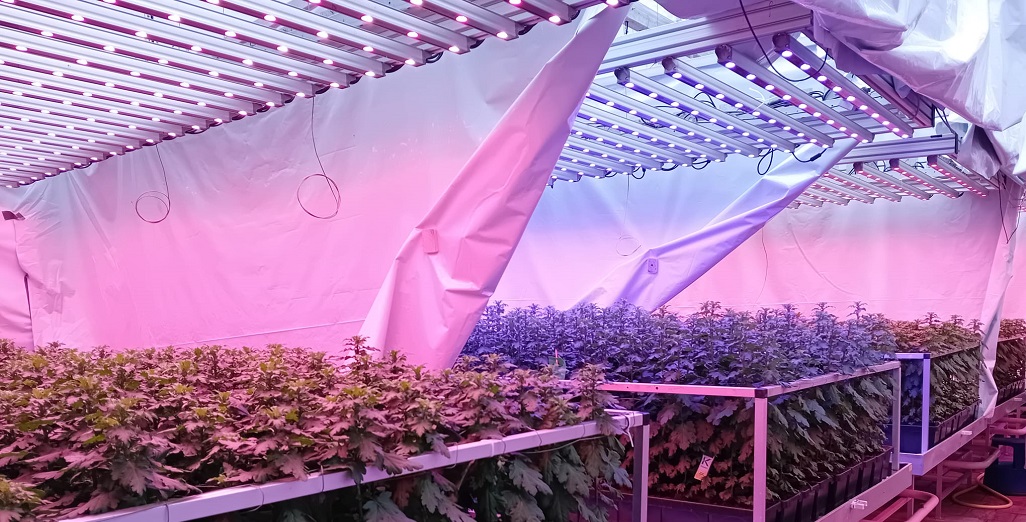Sign up here to subscribe to the Grower2grower Ezine. Every two weeks you will receive new articles, specific to the protected cropping industry, informing you of industry news and events straight to your inbox.
Jul 2020
Leaf Mould – Cladosporium

Tomato prices firm but the battle continues
The price of tomatoes is currently achieving much needed solid returns for growers. This made TV news headlines (14/7/2020), along with the high price of courgettes. There is a raft of reasons why tomato prices are high, including (and without pointing the obvious) the fact we are in the middle of winter. Production is at its lowest and disruption, from Covid-19, changed the way in which some growers grew their plants during lockdown. Crops have been removed early or planted later. The fact is the high price is a reflection of circumstances, completely out of many grower’s control and forced upon them by the unknown.
On Tuesday the 21st of April I posted the following article, news/post/covid-19-under-level-3/ – growers that worked hard and have been disciplined will deservedly get some much needed returns, to help compensate for substantial losses during lockdown. The message on TV today was “purchase tinned tomatoes”, great if they are NZ grown tinned tomatoes but when all greenhouse growers have sacrificed so much, promoting tinned tomatoes over fresh NZ tomatoes feels like a slap in the face for healthy eating options. It’s not like standard loose round tomatoes are $20 per kg.
If it couldn’t get harder:
Growing is not easy, as we in the industry know, and with the addition of this year’s hurdles growers don’t need added pressures. However, there is one issue, facing tomato crops, and that is an unusual increase in the amount of tomato leaf mould (Cladosporium). It has varied between growers but it is rampant at some properties. I have spent many years battling leaf mould, as the variety I grew did not have full resistance to all five known strains. What is known, from information I have received, is that this fungus develops new strains quiet easily. Not all of these strains will develop to cause major crop damage, but for some it may cause significant damage.
Seed companies continue to develop resistant varieties to new strains of leaf-mould, but as we have seen it is not a case of plucking these varieties out of thin air. It takes time, energy and extensive research to develop not only resistances but a variety that can produce well.
The now:
This year I have been disappointed to see several controls, I used in the past, have had less than desired results than previous seasons. It is a concern, but there may still be viable options that growers should consider. I strongly recommend you discuss potential options with your horticulture suppliers. Another issue could be the application systems. I can’t emphasise the importance of hitting the desired target enough when it comes to the leaf mould. Target the entire leaf canopy, including the new leaf as it is important to protect the new leaf from the mould for as long as possible. I have also observed that with good coverage there have been better results.
Where applicable, consider applying sulphur burners or spread loose sulphur on your heating pipes (check with your suppliers around Health and Safety). I would be prepared to sacrifice fruit/m2 to help leaf mould effected plants in the next three to four weeks. The temptation with spring only six weeks away may be to increase fruit load. I would only consider increasing stem density or fruit load if the crop registration figures, and the visual health of the plant, are in good shape.
Sulphur spread over heating pipes adds another level of control. Not a silver bullet but helps. This is a photo from my old property you may have seen previously.
Photo above – looking down on the leaf mould. Photo below – the underneath side of the leaf shows partial control from an application and illustrates the importance of spray coverage hitting the target.
I appreciate your comments. Please feel free to comment on the grower2grower Facebook page:
https://www.facebook.com/StefanGrower2grower/
Article Written and compiled by Stefan Vogrincic, Consultant, Grower2Grower
Article Edited by Marie Vogrincic, Editor, Grower2Grower
CLASSIFIED
Subscribe to our E-Zine
More
From This Category

Ground cover: woven weed mat or solid plastic… or both?

Integration of Philips GrowWise control system with climate computer allows Huisman Chrysanten to light more effectively and efficiently

New Philips GreenPower LED toplighting force 2.0

Condensation re-visited

Philips GrowWise Research Center to test and showcase intelligent lighting

























